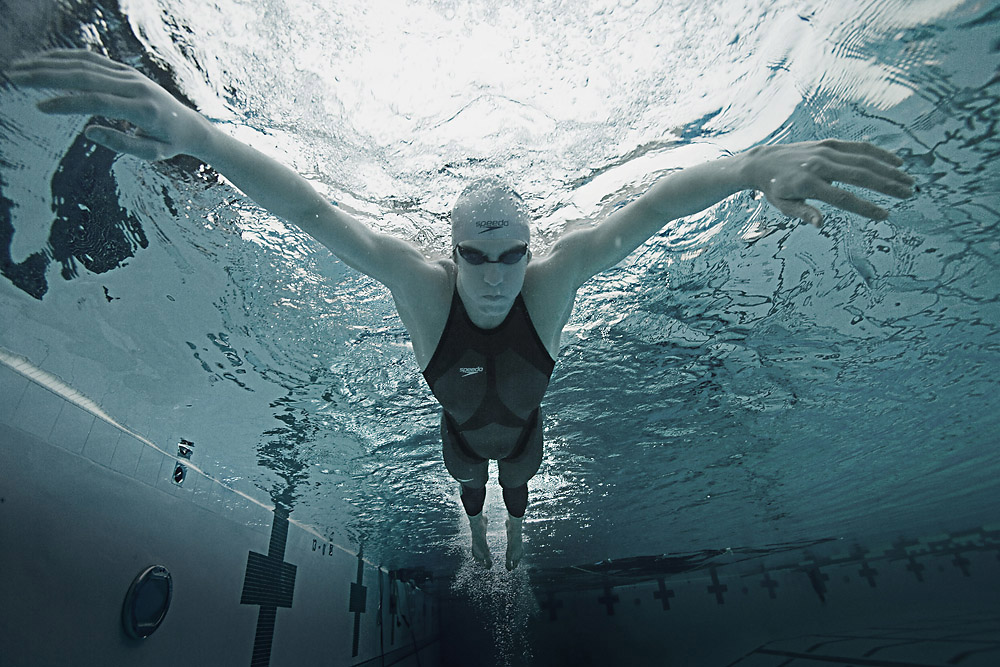There are all types of methods, used and abused by human beings, that have stunning effects on athletic performance. Steroids, widely banned, have the ability to make athletes better, faster and stronger — nonetheless, such drugs are largely illegal for ethical and medical reasons.
In the meantime, the concept of the human body as a machine that can be tweaked and optimized is gaining traction thanks to advancements in science and technology. But the world of sports remains committed to the all-natural athlete, despite the fact that this ideal no longer exists. Today’s athletes are aided by special uniforms, technological training, nutritional supplements — and, in spite of regulators’ best efforts — new types of doping methods that are difficult to ban and impossible to trace.
It may seem odd that athletes are expected to adhere to primitive standards of excellence while the rest of the world embraces technological advancement, unhindered. Drug bans in the name of health and fairness make sense, but steroids are not the only way athletes can boost their performance. Safer and stranger modern innovations exist — the use of which some term “tech doping.” These futuristic methods don’t always fall under the realm of cheating, but some may toe the line.
Tracking and perfecting
Sans drugs, there are many ways athletes can (and do) fine tune their bodies to near super-human results. Perhaps the simplest and least controversial way involves technology that tracks performance for valuable insight on what drives successes and failures. With proper data, the athletic achievements can be replicated, mistakes reduced and overall performance improved.
Today’s athletes can swallow pills that monitor core temperature, wear sensors that track movement, and attach devices that record video and statistics. The wealth of information yielded by this technology can help athletes (along with their coaches and trainers) understand their performances and tweak their technique accordingly.
And it gets more advanced: athletes that digitally track their eye movements are able to discover which retinal fixations (and corresponding cognitive functions) correlate with success. This isn’t cheating, but it’s not natural either. Understanding the body and the brain this intimately would not be possible without the breadth of technology we use today to obtain and harness information.
Uniforms and equipment
Can high-tech sportswear constitute as cheating? Apparently so: ultrasonically welded swimwear by Speedo was determined to have artificially enhanced athletic performance in the 2008 Olympics, after which the high-tech swimsuits were banned. There is little reason to believe that cutting edge shoes, outfits and equipment couldn’t, in time, give athletes a similar edge on land.
Already, today’s athletes benefit from lightweight, sweat-resistant sportswear that boosts performance by minimizing hindrances like weight and heat. NFL quarterbacks have in-helmet speakers, Olympians have bobsleds made of carbon fiber, and speed skaters wear suits that reduce drag. Is this cheating? Some think it comes close, or at the very least gives certain athletes unfair advantages.
The big issue here has a lot to do with resources, or the lack thereof. When the quality of equipment and sportswear dependant on a team or nation’s money flow, it’s little wonder wealth and wins so often go hand in hand.
Techy Training
The optimization of body and brain isn’t only done through careful tracking, but physically altering the way an athlete thinks, moves and acts in prep time.
A system called Neurotopia is one of such methods used by Football players for brain training and stimulation. Through this technology, athletes can train their brains to influence physiological processes that amplify their performance. The machine lets its user play a game with their mind in which lively mental focus is rewarded, and low focus punished. If used correctly and often, the player’s brain will optimize performance for rewards outside of the machine, too.
And speaking of science fiction-style training: athletes have experimented with all types of equipment — like pods that simulate exercising, and altitude chambers that replicate low-oxygen conditions — all for improved metabolism and endurance. They may also have highly-engineered diets, workout routines and therapies to ensure their brains and bodies are fine tuned to perform under pressure.
Training has always been key to success, but it’s only recently that advanced technology, science and metrics have become this valuable, and in some cases manipulative of mind and body. When these innovations become mainstream, the athletic training montages in sports movies like Rocky will seem crude and prehistoric.
Health and wellbeing
One of the biggest boons to athletes is the likelihood of injury, and the lasting impacts of, well, impacts. Luckily, there are emerging innovations that help prevent athletes from getting hurt, or ensure quick and effective treatment when they do. With athlete safety more scrutinized than ever, preserving bodies and careers is a priority for those in the sports tech industry.
Recently, various types of wearable technology have been used to detect high-impact collisions and other injuries so that medical treatment can be undergone right away. Gear is designed to be protective, with highly-engineered fits that support moving bodies and prevent injury. Head trauma may soon be able to be diagnosed on the sidelines with advanced spit and blood tests.
On top of this, athletes may soon benefit from a scientific feats that make them even better functioning than the normal human. For example, a cooling glove that eases muscle fatigue and produces results equal to steroids, supplements and cryotherapy to enhance athletic recovery, or even genetic engineering for built-in athletic strength.
[embedyt] http://www.youtube.com/watch?v=ioeSMmNLrCY[/embedyt]
What’s next?
Put all of these together, and we arguably have athletes that are better, stronger and faster as a direct result of science and technology. Today’s athletes are not natural at all, and it’s not a bad thing — some might even call it an inevitability.
When it comes to cheating, it will be difficult to know where the line should be drawn. Even with regulations in place, many athletes continue to quietly partake in performance enhancement drugs undetected. Some argue that sports would be better off allowing steroid use — transparently and with and medical advisement — than to let it continue in the shadows. As for “tech doping,” it’s also a sticky issue. As long as the playing field is unequal, players with money and science on their side will likely keep the upper hand.
The same goes for safety. Though many technological innovations protect athletes, not all teams can afford the standard let alone the extras. Winning almost always trumps safety, and only rigorous and long-term research will tell if emerging performance enhancement methods are truly sound.
At some point, fans, athletes and others in the industry will have to acknowledge the implications of these advancements, and decide: Can we equal the playing field? Do we allow enhancements of some kinds, and not others? Or none at all? Will we embrace the super-athlete, or decide natural is better after all? Whatever the case, I hope decisions are mindful of both athlete well-being and the potential of tech to transform sports as we know them.




